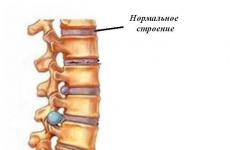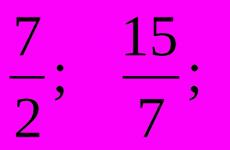Lesson on the world around. Topic: "Compass". Compass presentation What is a compass presentation
Slide 2
So what is a compass?
Compass (in the professional speech of sailors: compass) is a device that facilitates orientation in the terrain. There are three fundamentally different types of compass: magnetic compass, gyro compass, and electronic compass.
Slide 3
Magnetic compass. History of creation
Presumably, the compass was invented in China and was used to indicate the direction of travel in deserts. In Europe, the invention of the compass is attributed to the XII-XIII centuries, but its device remained very simple - a magnetic needle, fixed on a cork and lowered into a vessel with water. In the water, the cork with an arrow was oriented in the right way.
Slide 4
Magnetic compass
The principle of operation is based on the interaction of the magnetic field of the permanent magnets of the compass with the horizontal component of the Earth's magnetic field. A freely rotating magnetic needle rotates around an axis, located along the lines of force of the magnetic field. Thus, the arrow always points one of its ends in the direction of the magnetic field line, which goes to the magnetic North Pole.
Slide 5
The structure of the magnetic compass
- frame
- circular scale (limb) divided by 120 divisions
- magnetic needle
- sighting device (front sight and rear sight)
- readout index
- brake
Slide 6
What is a gyrocompass?
A device indicating the direction on the earth's surface; it includes one or more gyroscopes. Almost universally used; unlike a magnetic compass, its readings are related to the direction to the true geographic (rather than magnetic) North Pole
Slide 7
What is a gyrocompass? Discovery history
The prototype of the modern gyrocompass was first created by G. Anschutz-Kampfe (patented in 1908), soon a similar device was built by E. Sperry (patented in 1911). Instruments of modern design are significantly improved in comparison with the first models; they are characterized by high accuracy and reliability and are more convenient to operate
Slide 8
The structure of the gyrocompass
The simplest gyrocompass consists of a gyroscope suspended inside a hollow ball that floats in a liquid; the weight of the ball with the gyroscope is such that its center of gravity is located on the axis of the ball in its lower part when the axis of rotation of the gyroscope is horizontal
Slide 9
The principle of operation of the gyrocompass
Slide 10
Electronic compass
Operating principle:
- Based on signals from satellites, the coordinates of the receiver of the satellite navigation system (and, accordingly, the object) are determined
- The moment in time at which the coordinates were determined is marked.
- A certain time interval is expected.
- The location of the object is redefined.
- Based on the coordinates of two points and the size of the time interval, the vector of the movement speed is calculated and from it: the direction of movement, the speed of movement.
- Goes to step 2.
Slide 11
Restrictions:
- Naturally, if the object does not move, the direction of movement will not work. The exception is large enough objects (for example, airplanes), where it is possible to install 2 receivers (for example, at the ends of the wings). In this case, the coordinates of two points can be obtained immediately, even if the object is stationary, and go to step 5
- Another limitation is due to the accuracy of determining coordinates by satellite positioning systems and affects mainly low-speed objects (pedestrians)
Slide 12
Electromagnetic compass
The electromagnetic compass is a "deployed" electric generator, in which the earth's magnetic field plays the role of a stator, and one or more frames with windings - a rotor. There are advantages over a conventional compass For a simple version of an electromagnetic compass with an indicator in the form of a galvanometer, fast movement is required, so the first application of an electromagnetic compass was found in aviation.
Slide 13
Other types of compasses
- Compass. Geodetic tool for measuring angles when shooting on the ground, the essence of a special kind of compass
- Geological (mountain) material
Slide 14
Geological (mountain) compass
Structure: It is usually mounted on a rectangular plate (brass or plastic). On the dial of the compass, divisions go from 0 ° to 360 ° in a counterclockwise direction. The designation 0 ° has the letter C at 90 ° the letter B at 180 ° the letter Y, at 270 ° the letter 3. C (north) and South (south) are located opposite the short sides of the compass The second part of the compass is a clinometer and a half-dial with divisions from 0 ° up to 90 ° in both directions. The angles of incidence of the layers are determined with a clinometer and half-limbe divisions.
Slide 15
Measurement methods.
With the help of a geological hammer, a site is cleaned on the rock, corresponding to the natural bedding of the rock. If you want to first determine the position of the strike line of the formation (at angles of incidence> 10 °), give the compass plate a vertical position. Apply the long side of the compass to the plane (natural area) of the formation so that the clinometer reads 0 °. A line is drawn along the long side of the compass plate, which indicates the direction of the strike of the formation. If you first want to determine the position of the line of incidence (at small angles of incidence of the formation), give the compass plate a vertical position. Apply the long side of the compass to the plane of the bed so that the clinometer indicates the maximum angle.
Slide 16
View all slides
What is a compass A compass is a device that makes it easier to navigate the terrain. There are three fundamentally different types of compass: magnetic compass, gyro compass, and electronic compass. A compass is a device that makes it easier to navigate the terrain. There are three fundamentally different types of compass: magnetic compass, gyro compass, and electronic compass.



History of the creation of the magnetic compass The compass was invented in China during the Song dynasty and was used to indicate the direction of travel in deserts. In Europe, the invention of the compass dates back to the XIIXIII centuries, but its design remained very simple. At the beginning of the XIV century. Italian Flavio Joya has significantly improved the compass. The compass was invented in China during the Song dynasty and was used to indicate the direction of travel in deserts. In Europe, the invention of the compass dates back to the XIIXIII centuries, but its design remained very simple. At the beginning of the XIV century. Italian Flavio Joya has significantly improved the compass.

Magnetic compass History of creation: Presumably, the compass was invented in China and was used to indicate the direction of travel in deserts. In Europe, the invention of the compass dates back to the XIIXIII centuries, but its device remained a very simple magnetic needle, fixed on a cork and lowered into a vessel with water. In the water, the cork with an arrow was oriented in the right way.

Magnetic compass The principle of operation is based on the interaction of the magnetic field of the permanent magnets of the compass with the horizontal component of the Earth's magnetic field. A freely rotating magnetic needle rotates around an axis, located along the lines of force of the magnetic field. Thus, the arrow always points one of its ends in the direction of the magnetic field line, which goes to the magnetic North Pole.


What is a gyrocompass? A device indicating the direction on the earth's surface; it includes one or more gyroscopes. Almost universally used; unlike a magnetic compass, its readings are related to the direction to the true geographic (rather than magnetic) North Pole

What is a gyrocompass? The history of the discovery The prototype of the modern gyrocompass was first created by G. Anschütz-Kampfe (patented in 1908), soon a similar device was built by E. Sperry (patented in 1911). Instruments of modern design are significantly improved in comparison with the first models; they are characterized by high accuracy and reliability and are more convenient to operate

What is a gyrocompass? The structure of the gyrocompass The simplest gyrocompass consists of a gyroscope suspended inside a hollow sphere that floats in a liquid; the weight of the ball with the gyroscope is such that its center of gravity is located on the axis of the ball in its lower part when the axis of rotation of the gyroscope is horizontal


Electronic compass Principle of operation: 1. Based on signals from satellites, the coordinates of the receiver of the satellite navigation system (and, accordingly, the object) are determined. 2. The moment in time at which the coordinates were determined is recorded. 3. A period of time is expected. 4. The location of the object is re-determined. 5. Based on the coordinates of the two points and the size of the time interval, the vector of the movement speed is calculated and from it: the direction of movement the speed of movement 6. Go to step 2.

Electronic compass Limitations: 1. Naturally, if the object does not move, the direction of movement will not work. The exception is large enough objects (for example, airplanes), where it is possible to install 2 receivers (for example, at the ends of the wings). In this case, the coordinates of two points can be obtained immediately, even if the object is stationary, and go to step 5 2. Another limitation is due to the accuracy of determining the coordinates of satellite positioning systems and affects mainly slow-moving objects (pedestrians)

Electromagnetic compass The electromagnetic compass is a "deployed" electric generator, in which the earth's magnetic field plays the role of a stator, and one or more frames with rotor windings. There are advantages over a conventional compass For a simple version of an electromagnetic compass with an indicator in the form of a galvanometer, fast movement is required, so the first application of an electromagnetic compass was found in aviation.


Geological (mountain) compass Construction: It is usually mounted on a rectangular plate (brass or plastic). On the dial of the compass, divisions go from 0 ° to 360 ° in a counterclockwise direction. The designation 0 ° has the letter C at 90 ° the letter B at 180 ° the letter Y, at 270 ° the letter 3. C (north) and South (south) are located opposite the short sides of the compass The second part of the compass is a clinometer and a half-dial with divisions from 0 ° to 90 ° in both directions. The angles of incidence of the layers are determined with a clinometer and half-limbe divisions

Geological (mountain) compass Measurement methods A geological hammer is used to clean an area on the rock that corresponds to the natural bedding of the rock. If you want to first determine the position of the strike line of the formation (at angles of incidence> 10 °), give the compass plate a vertical position. Apply the long side of the compass to the plane (natural area) of the formation so that the clinometer reads 0 °. A line is drawn along the long side of the compass plate, which indicates the direction of the strike of the formation. If you first want to determine the position of the line of incidence (at small angles of incidence of the formation), give the compass plate a vertical position. Apply the long side of the compass to the plane of the bed so that the clinometer shows the maximum angle 10 °), "> 10 °), give the compass plate a vertical position. Apply the long side of the compass to the plane (natural area) of the formation so that the clinometer shows 0 °. A line is drawn along the long side of the compass plate, which indicates the direction of strike of the formation. If you first want to determine the position of the dip line (at small angles of incidence of the reservoir), give the compass plate a vertical position. Apply the long side of the compass to the plane of the reservoir so that the clinometer shows the maximum angle "> 10 °)," title = "(! LANG: Geological (mountain) compass Measurement methods A geological hammer is used to clean an area corresponding to the natural bedding of the rock."> title="Geological (mountain) compass Measurement methods A geological hammer is used to clean an area on the rock that corresponds to the natural bedding of the rock. If you want to first determine the position of the formation strike line (at dip angles> 10 °),"> !}
COMPASKOMPAS (in the professional speech of seafarers:
compass) - a device that makes it easier to navigate
terrain. There are three fundamentally different
compass type: magnetic compass, gyrocompass and
electronic compass.
MAGNETIC COMPASS. STORY.
The compass was invented in China during the dynastySong and was used to indicate direction
movement in the deserts.
MAGNETIC COMPASS. STORY.
In Europe, the invention of the compass dates back to the XII-XIII centuries, howeverits device remained very simple - a magnetic needle, reinforced
on a cork and dipped in a vessel with water. In the water a cork with an arrow
orientated in the right way. At the beginning of the XIV century, the Italian Flavia
Joya has made significant improvements to the compass. He put on a magnetic needle
on a vertical hairpin, and attached a light circle-card to the arrow,
broken along the circumference into 16 points.
MAGNETIC COMPASS. STORY.
In the 16th century, the division of the card was introducedat 32 rumba, and a box with an arrow of steel
placed in gimbals to
eliminate the influence of the ship's pitching on the compass.
V
Xvii
century
compass
equipped with a direction finder - rotating
with a diametrical ruler with scopes on
ends, reinforced with its center on
the lid of the box above the arrow.
MAGNETIC COMPASS. OPERATING PRINCIPLE.
Principleactions
founded
on the
the interaction of the magnetic field of constant
magnets
compass
With
horizontal
component
magnetic
fields
Earth.
Free rotating magnetic needle
rotates around the axis, positioning along
magnetic field lines. In this way,
the arrow always points to one of the ends at
the direction of the magnetic field line, which
goes to the north magnetic pole
MAGNETIC COLUMN. STRUCTURE.
1.Body2. Circular scale (limb),
divided by 120 divisions
3.Magnetic arrow
4. Sighting device
(front sight and rear sight)
5. Readout index
6. Brake
GYRO-COMPASS
The device indicating the direction to the earthsurfaces; it includes one or more
gyroscopes. Almost universally used; v
unlike a magnetic compass, its readings
related to the direction of the true geographic
(not magnetic) North Pole
GYRO-COMPASS. STORY.
Prototype of a modern gyrocompasswas first created by G. Anschutz-Kampfe (patented
in 1908), soon a similar device was built by E.
Sperry (patented 1911). Devices
modern
constructions
much
improved over the first
models; they are highly accurate and
reliability and more convenient operation
GYRO-COMPASS. STRUCTURE.
Simplestgyro-compass
consists
from
gyroscope,
suspended inside a hollow ball,
that floats in liquid; weight
ball with a gyroscope is such that its
the center of gravity is located on the axis
ball at its bottom when the axis
gyroscope rotation is horizontal
GYROKOMAPS. PRINCIPLE OF OPERATION.
ELECTRONIC COMPASS. PRINCIPLE OF OPERATION.
1. Based on signals from satellitesare determined
coordinates
receiver
systems
satellite
navigation
(and,
respectively, object)
2. The point in time at which it was
determination of coordinates is made.
3. Waiting for a certain time interval.
4. Re-locating
object.
5. Based on the coordinates of two points and
the size of the time interval is calculated
vector of speed of movement and from it:
◦ direction of movement
◦ travel speed
6. Proceed to point 2.
ELECTRONIC COMPASS.
Restrictions:1. Naturally,
if
an object
not
moves, direction of movement
you won't be able to find out. An exception
make up
enough
big
objects (for example, airplanes), where
it is possible to install 2
receiver (for example, at the ends
wings). In this case, the coordinates of two
points can be obtained immediately, even
if the object is stationary, and go to
paragraph 5
2. Another limitation is due to
the accuracy of determining the coordinates
satellite
systems
positioning and influences, mainly
way, to slow-moving objects
(pedestrians)
MINING COMPASS
Structure:Geological
compass
usually
mounted on a rectangular plate
(brass or plastic). On the
the dial of the compass goes from 0 ° to
360 ° rearward facing
clockwise. The designation 0 ° has
letter C at 90 ° letter B at 180 ° letter Y, y
270 ° Letter 3.N (north) and S (south)
located opposite the short sides
compass
The second part of the compass is
clinometer and half-limb with graduations from
0 ° to 90 ° in both directions. Clinometer and
divisions on the half-limbe determine
angles of incidence of layers
Geological (mountain) compass
With a geological hammercleanse
on the
breed
platform,
corresponding to natural bedding
breed. If you want to first define
the position of the strike line of the formation (at
angles of incidence> 10 °), attach to the plate
compass
vertical
position.
plane (natural area) of the reservoir so that
so that the clinometer reads 0 °. Along the long
the sides of the compass plate cross out
line,
which
indicates
direction
the strike of the formation. If they want to first
determine the position of the line of incidence (at
small angles of incidence), give
compass plate vertical position.
Attach the long side of the compass to
plane of the reservoir so that the clinometer
showed the maximum angle
Description of the presentation for individual slides:
1 slide
Slide Description:
2 slide

Slide Description:
So what is a compass? Compass (in the professional speech of sailors: compass) is a device that facilitates orientation in the terrain. There are three fundamentally different types of compass: magnetic compass, gyro compass, and electronic compass.
3 slide

Slide Description:
Magnetic compass History of creation: Presumably, the compass was invented in China and was used to indicate the direction of travel in deserts. In Europe, the invention of the compass is attributed to the XII-XIII centuries, but its device remained very simple - a magnetic needle, fixed on a cork and lowered into a vessel with water. In the water, the cork with an arrow was oriented in the right way.
4 slide

Slide Description:
Magnetic compass The principle of operation is based on the interaction of the magnetic field of the permanent magnets of the compass with the horizontal component of the Earth's magnetic field. A freely rotating magnetic needle rotates around an axis, located along the lines of force of the magnetic field. Thus, the arrow always points one of its ends in the direction of the magnetic field line, which goes to the magnetic North Pole.
5 slide

Slide Description:
Magnetic compass Magnetic compass structure 1. body 2. circular scale (dial) divided by 120 divisions 3. magnetic pointer 4. sighting device (front sight and rear sight) 5. readout indicator 6. brake
6 slide

Slide Description:
What is a gyrocompass? A device indicating the direction on the earth's surface; it includes one or more gyroscopes. Almost universally used; unlike a magnetic compass, its readings are related to the direction to the true geographic (rather than magnetic) North Pole
7 slide

Slide Description:
What is a gyrocompass? History of discovery The prototype of the modern gyrocompass was first created by G. Anschutz-Kampfe (patented in 1908), soon a similar device was built by E. Sperry (patented in 1911). Instruments of modern design are significantly improved in comparison with the first models; they are characterized by high accuracy and reliability and are more convenient to operate
8 slide

Slide Description:
What is a gyrocompass? The structure of the gyrocompass The simplest gyrocompass consists of a gyroscope suspended inside a hollow sphere that floats in a liquid; the weight of the ball with the gyroscope is such that its center of gravity is located on the axis of the ball in its lower part when the axis of rotation of the gyroscope is horizontal
9 slide

Slide Description:
10 slide

Slide Description:
Electronic compass Principle of operation: 1. Based on signals from satellites, the coordinates of the receiver of the satellite navigation system (and, accordingly, the object) are determined. 2. The moment in time at which the coordinates were determined is recorded. 3. A period of time is expected. 4. The location of the object is re-determined. 5. Based on the coordinates of the two points and the size of the time interval, the vector of the movement speed is calculated and from it: the direction of movement the speed of movement 6. Go to step 2.
11 slide

Slide Description:
Electronic compass Limitations: 1. Naturally, if the object does not move, the direction of movement will not work. The exception is large enough objects (for example, airplanes), where it is possible to install 2 receivers (for example, at the ends of the wings). In this case, the coordinates of two points can be obtained immediately, even if the object is stationary, and go to step 5 2. Another limitation is due to the accuracy of determining the coordinates by satellite positioning systems and affects mainly slow-moving objects (pedestrians)
12 slide

Slide Description:
Electromagnetic compass The electromagnetic compass is a "deployed" electric generator, in which the earth's magnetic field plays the role of a stator, and one or more frames with windings - a rotor. There are advantages over a conventional compass For a simple version of an electromagnetic compass with an indicator in the form of a galvanometer, fast movement is required, so the first application of an electromagnetic compass was found in aviation.
13 slide

Slide Description:
Other types of compasses Geodetic instrument for measuring angles when surveying on the ground, the essence of a special type of compass
14 slide

Slide Description:
Geological (mountain) compass Construction: It is usually mounted on a rectangular plate (brass or plastic). On the dial of the compass, divisions go from 0 ° to 360 ° in a counterclockwise direction. The designation 0 ° has the letter C at 90 ° the letter B at 180 ° the letter Y, at 270 ° the letter 3. C (north) and South (south) are located opposite the short sides of the compass The second part of the compass is a clinometer and a half-dial with divisions from 0 ° up to 90 ° in both directions. The angles of incidence of the layers are determined with a clinometer and half-limbe divisions
15 slide

Slide Description:
Geological (mountain) compass Methods of measurement With the help of a geological hammer, an area corresponding to the natural bedding of the rock is cleaned on the rock. If you want to first determine the position of the strike line of the formation (at angles of incidence> 10 °), give the compass plate a vertical position. Apply the long side of the compass to the plane (natural area) of the formation so that the clinometer reads 0 °. A line is drawn along the long side of the compass plate, which indicates the direction of the strike of the formation. If you first want to determine the position of the line of incidence (at small angles of incidence of the formation), give the compass plate a vertical position. Apply the long side of the compass to the plane of the bed so that the clinometer shows the maximum angle
16 slide

Slide Description:
17 slide

Slide Description:
18 slide

Slide Description:
On the globe, there are areas in which the magnetic elements change very sharply and have values that are very different from the corresponding values in neighboring areas. Such areas are called areas of magnetic anomaly.
19 slide

Slide Description:
In most cases, the cause of the magnetic anomaly is the presence of large masses of magnetic iron ore under the surface of the Earth. A detailed study of the magnetic field of the Earth is a powerful tool for exploring the wealth hidden in the bowels of the Earth.






